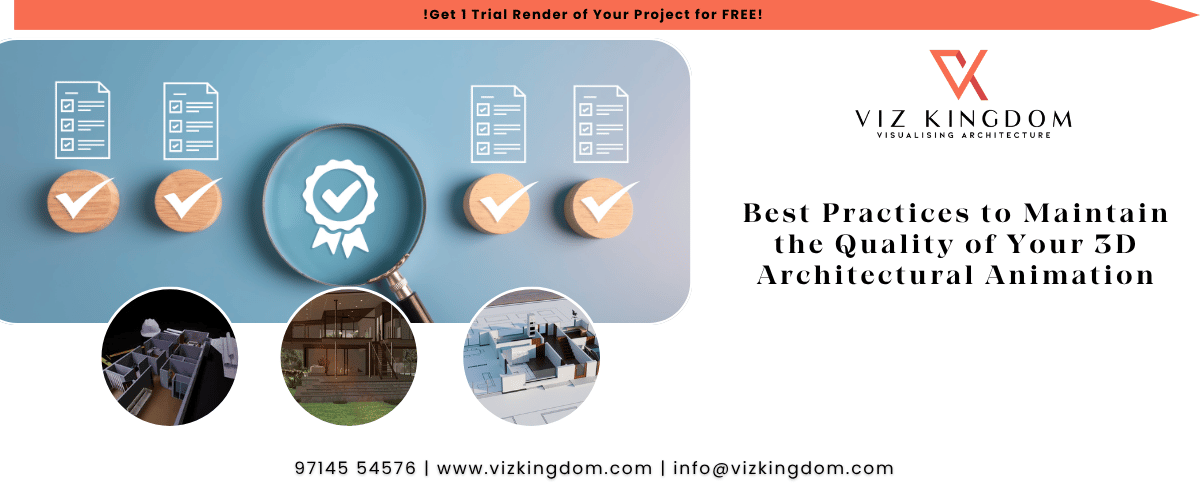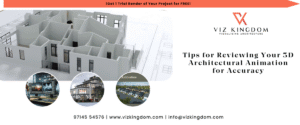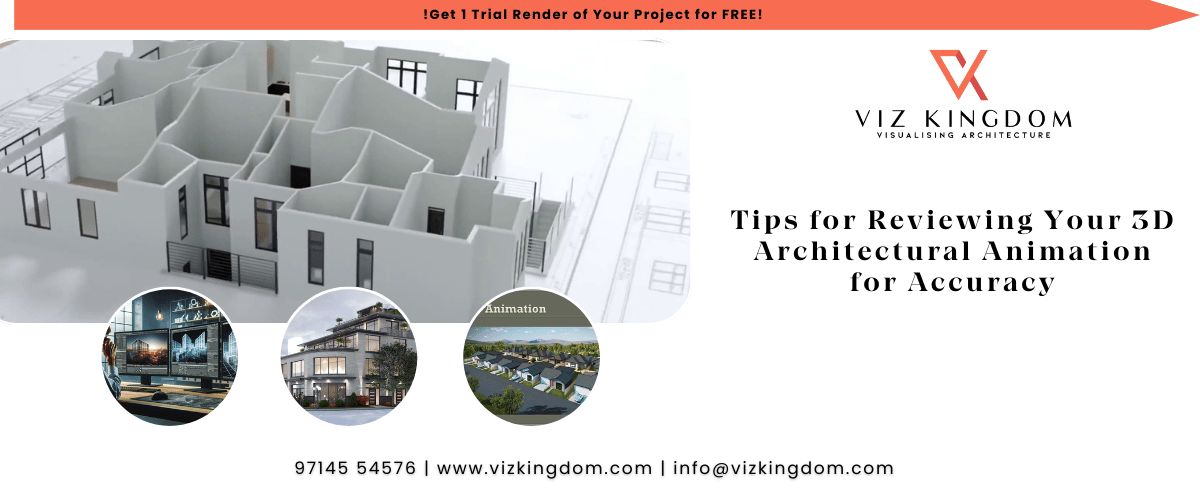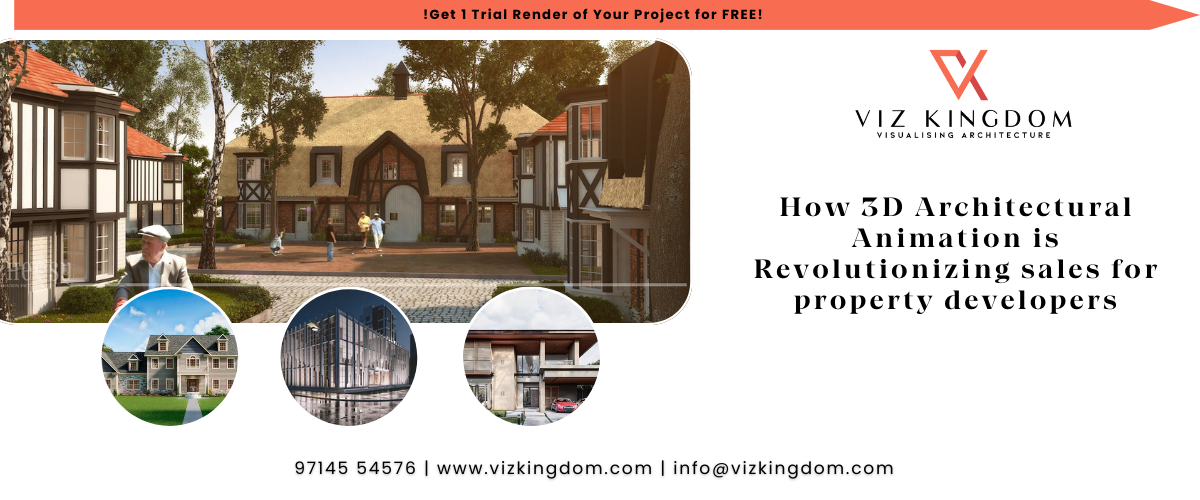
Best Practices to Maintain the Quality of Your 3D Architectural Animation
Whether you’re an architect, interior designer, or real estate developer, 3D architectural animation services are a powerful way to bring your vision to life. But here’s the catch—quality matters. A lot.
At Vizkingdom, we’ve seen firsthand how high-quality animation can win deals, sell properties, and make projects unforgettable. But even the most beautiful designs can fall flat without the right animation practices in place.
So, if you’re planning a new project or working with a 3D animation studio, here are the best practices you should follow to make sure your animation is sharp, effective, and professionally polished.
Pre-Production Planning Matters
🎯 Define Clear Project Goals and Target Audience
Before the animation even begins, get crystal clear on your objective.
Is this animation for an investor pitch, a marketing campaign, or a client walk-through?
Knowing your audience helps guide everything—camera angles, mood, pacing, even music. For instance, a real estate buyer might want a warm, inviting walkthrough, while a city planner may prefer a clean, technical flyover.
✍️ Create a Storyboard or Script
Animations aren’t just eye candy—they tell a story. Use a storyboard or shot list to map out key spaces, focal points, and transitions. This helps your team (and your client) stay aligned from day one.
Choose the Right Tools and Tech
💻 Use Professional 3D Software
From 3ds Max and Blender to D5 and Unreal Engine, animation studios today have access to amazing tools. Be sure your provider uses software that’s compatible with your source files and delivers high-fidelity results.
⚙️ Ensure Proper Hardware Support
Smooth animations require powerful GPUs and fast rendering setups. Skimping on hardware leads to flickering, lag, or grainy output. A professional setup ensures consistency and speed.
Optimize 3D Models for Animation
🧹 Clean Up Your Geometry
Messy models = messy renders. Remove unused elements, clean up overlapping geometry, and organize objects into layers or groups.
🪶 Reduce Poly Count Where Possible
Heavy models slow things down. Use proxies, LODs (Level of Detail), and texture baking to keep things smooth without sacrificing realism.
Nail the Texturing and Lighting
🧱 Use High-Quality PBR Textures
Photorealism starts with quality materials. Use high-res textures with normal, bump, and specular maps to simulate real-world surfaces.
💡 Light Like a Cinematographer
Lighting can make or break a scene. Pay attention to natural light sources, time-of-day effects, interior lighting, and shadows.
Using Global Illumination (GI) and HDRI environments adds realism and mood.
📊 A study by ArchDaily shows that realistic lighting increases viewer engagement by over 45% in animated property presentations.
Smooth and Natural Camera Movements
Avoid jerky or unnatural camera paths. Instead, mimic real human movement:
- Use slow pans, smooth transitions, and steady flythroughs
- Focus on entrances, key design features, and spatial flow
- Avoid abrupt cuts unless narratively necessary
Treat your animation like a guided tour—calm, intentional, and inviting.
Render With the Right Settings
🎥 Choose the Right Frame Rate and Resolution
For most USA-based clients, 1080p is the minimum. For high-end marketing? Go 4K.
- Standard: 1920×1080 @ 30fps
- Premium: 3840×2160 @ 60fps
Choose a format that works for both web and large displays (MP4 or MOV are ideal).
Add Post-Production Polish
🎶 Sound Design and Narration
A little background music or a voiceover can take your animation from good to great. Choose tracks that align with the project’s tone—modern, classical, ambient, etc.
🎨 Color Grading and FX
Subtle tweaks in contrast, saturation, and depth can enhance realism. Avoid over-processing—let the architecture speak.
Collaborate and Communicate Early
📅 Set Milestones and Review Points
Break the project into phases:
- Concept
- Draft walkthrough
- Lighting & texture pass
- Final render
Frequent feedback prevents costly rework.
💬 Use Collaboration Tools
We recommend platforms like Frame.io, Trello, or Google Drive to keep communication fast and files organized. At Vizkingdom, we provide clients with real-time progress updates and secure file access.
Review Everything Before Final Delivery
Before hitting render, check for:
- Clipping objects or camera paths through walls
- Texture stretching or popping
- Lighting glitches or flicker
- Consistency in branding and color tones
✅ Pro Tip: Watch your animation multiple times—on different devices and in different lighting—to catch hidden issues.
Stay Ahead of Industry Trends
Animation tech evolves fast. In the USA, we’re seeing big moves toward:
- VR-ready walkthroughs
- AI-assisted rendering
- Drone + CGI hybrid flyovers
Keep your team (and tools) updated with webinars, courses, and design expos.
Final Thoughts
Great animation doesn’t happen by accident—it’s built with planning, precision, and creativity. Whether you’re animating a luxury apartment in New York or a beachfront villa in Miami, these best practices will help maintain the quality and impact of your 3D architectural animation.
Looking for a reliable team that gets it right the first time? At Vizkingdom, we deliver high-quality 3D architectural animation services for USA-based architects, developers, and agencies who demand nothing but the best.
FAQs – 3D Architectural Animation Services
1. What’s the ideal length for a 3D architectural animation?
Usually 1 to 3 minutes—enough to showcase key areas without losing viewer attention.
2. How much does a high-quality animation cost?
It depends on scope and duration, but typical USA ranges are $2,500–$5,000. Outsourcing to India with Vizkingdom offers similar quality at 40–60% lower cost.
3. Do I need a script for the animation?
Yes, especially if the animation includes voiceover or is used for marketing.
4. How long does it take to complete a 1-minute animation?
Approximately 4–6 weeks for basic projects; longer for complex environments.
5. Can I get updates or changes?
Yes! At Vizkingdom, we offer flexible revision packages and aftercare support.






